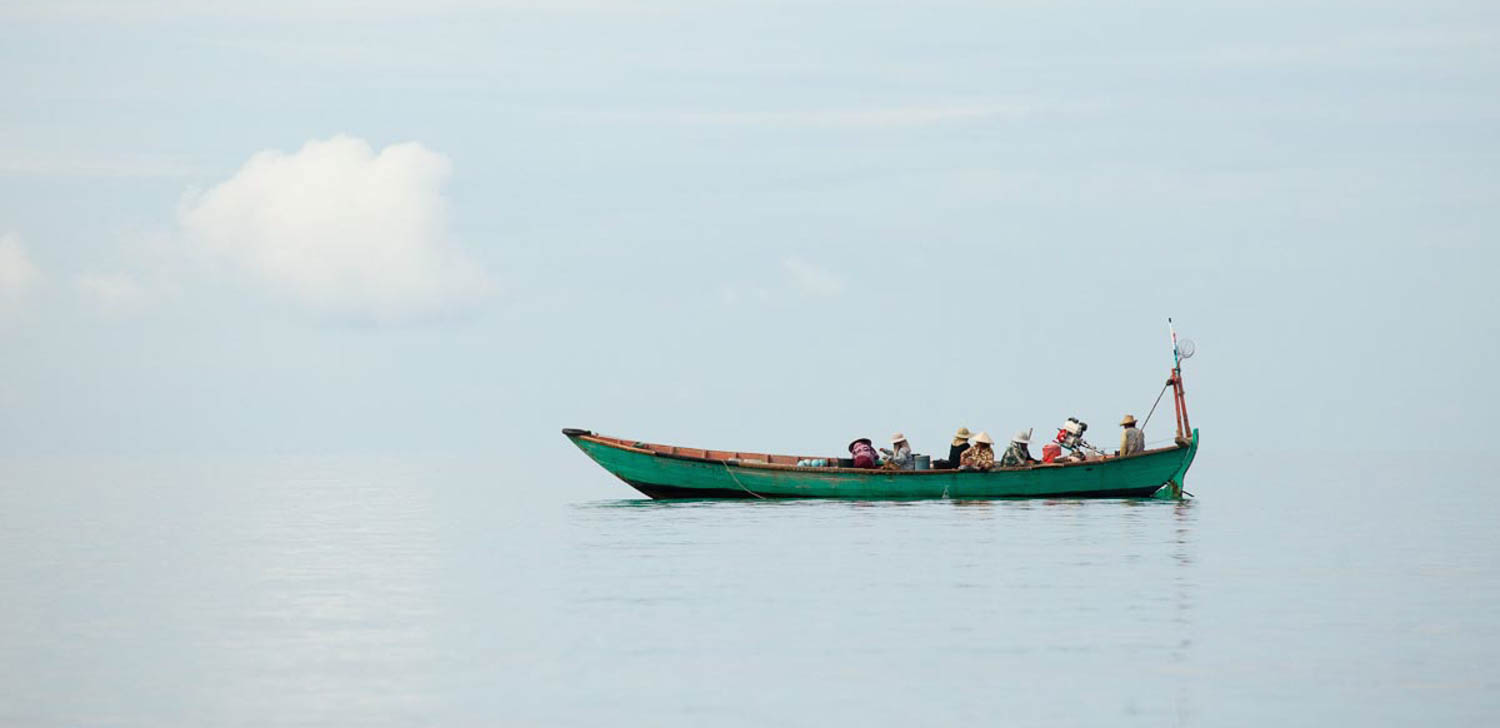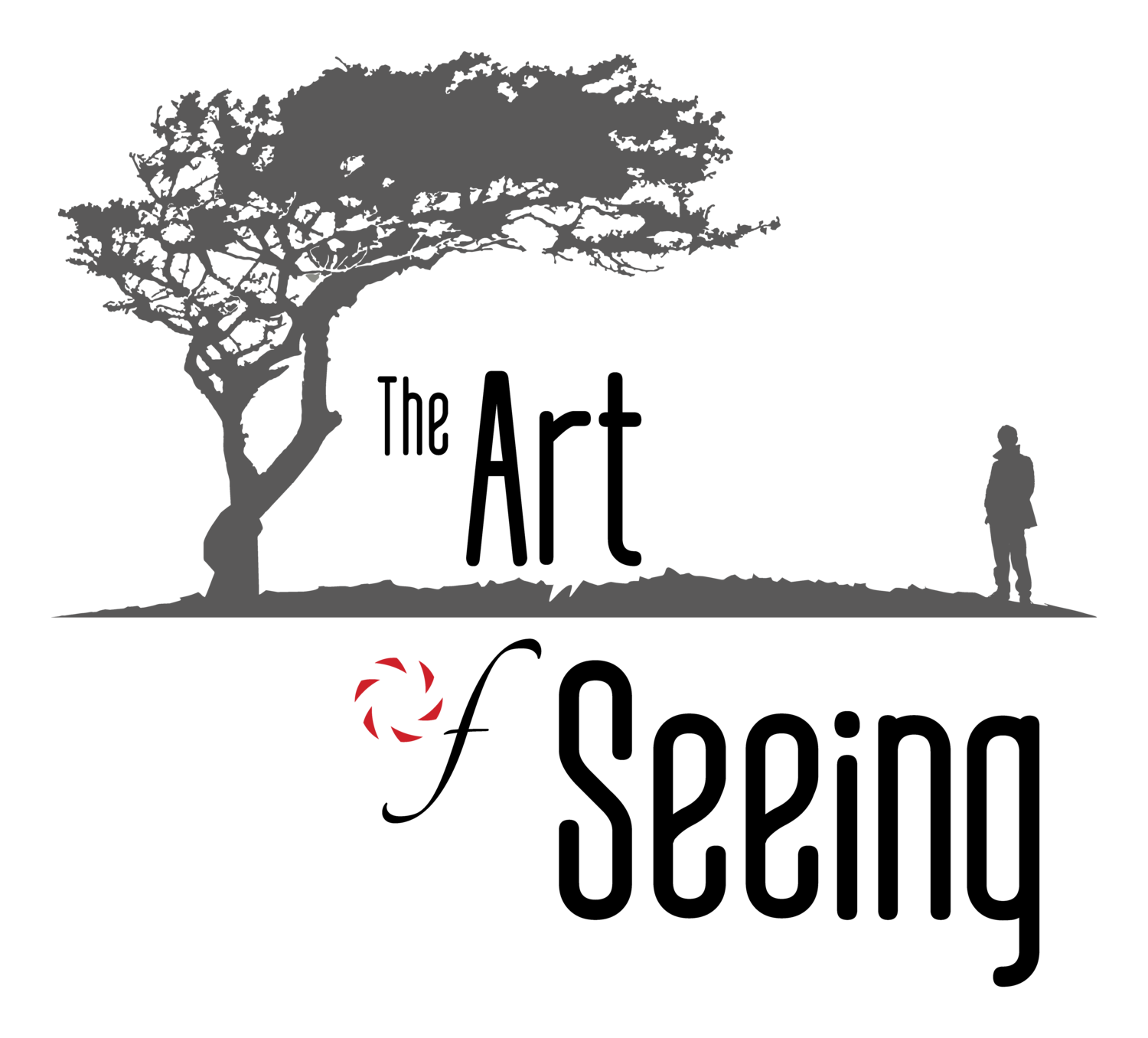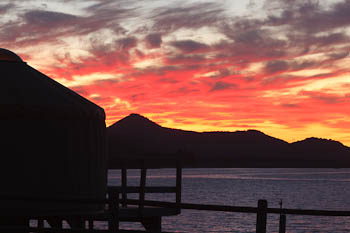
Insights and musings about photography and the creative process
Phone It In. Seriously.
It turns out that the camera in your pocket is a powerful too for developing your Photographer’s Eye and sharpening your creative vision. Since most of the technical decisions are made for you, a phone camera frees you to focus on the image, which, after all, is what really counts.
The other day, on the home stretch of my morning run, I stopped to snap a photo. The dense fog that morning gave everything around Ballona Creek a mysterious, ethereal look. The diffused sun rising across the water looked interesting, so I pulled my phone out of my pocket and clicked a few frames. Hmm, not as cool as it looked, I thought reviewing my images on screen. Oh well. Then I noticed the bridge, that looked cool too. Maybe that will make a better picture. A couple more snaps. I should get lower, I thought. So I picked my way down the rocks lining the creek bank. More snaps...a little better. I need to get home and start my day, I thought climbing back up to bike trail. Just then, a cyclist whizzed by and disappeared into the fog. Wow, that looks cool...just need to wait for another biker. You see where this is going, right? An hour and 159 snaps later I thought, I really have to get home. I ended up with a handful of keepers from that morning, mostly courtesy of a lovely egret hanging out on the docks. So I guess my point is partly about serendipity, which has a way of showing up whenever you follow your instincts. But it’s also about how easy it is to slip into what I call C-mode (creative mode) when you are shooting with your phone. That’s a good thing.
It turns out that the camera in your pocket is a powerful too for developing your Photographer’s Eye and sharpening your creative vision. Since most of the technical decisions are made for you, a phone camera frees you to focus on the image, which, after all, is what really counts. It also removes a lot of the creative pressure of doing 'serious photography', which ironically makes you more creative. I know I feel a lot more instinctive and spontaneous when I'm shooting with my iPhone. For those pixel peepers obsessed with image quality ('IQ'), I agree we haven't reached DSLR quality in our smartphone cameras yet, but let me ask you: How many iPhone billboards did you drive under this week? Those 20X50 foot (printed) images really were shot on a phone. Just how much 'quality' do you need?
One key to making great images with your phone camera is taking an intentional approach when you shoot. In other words, be serious, but don't take it so seriously. Lighten up, but make conscious choices. Pay attention to framing and backgrounds. Try variations. But mostly, give your brain a break and listen to your gut. Look at your images and notice your first reaction but don’t analyze too much. Let yourself be lost in that wordless state where you’re feeling more than thinking. If you can’t remember later what you were thinking when you took those pictures, you did it right.
To see more examples of smartphone camera photos, check out Ken's iPhoneography Gallery
I'd love to see some your favorite phone images. Post a link in the comments or upload your images to Instagram with hashtags #phoneitin and #artofseeing
Photo of the Day: Newspaper Rock
Various cultures dating back several thousand years have left their mark on a sandstone slab now known as Newspaper Rock in southeastern Utah. If you get a chance to photograph rock art, try...
Various cultures dating back several thousand years have left their mark on a sandstone slab now known as Newspaper Rock in southeastern Utah. If you get a chance to photograph rock art, try using a polarizing filter. By eliminating glare, the polarizer greatly increases the contrast between the picotgraphs and background.
Photo Tip: It's O.K. to Look the Other Way
Photographers have been shooting sunrises and sunsets since cameras were invented - we can't help ourselves. This serene scene was my reward for rising early on a Saturday. Cachuma Lake in the heart of the Santa Ynez valley is one of my favorite photo locations in Santa Barbara county.
Photographers have been shooting sunrises and sunsets since cameras were invented - we can't help ourselves. This serene scene was my reward for rising early on a Saturday. Cachuma Lake in the heart of the Santa Ynez valley is one of my favorite photo locations in Santa Barbara county. Although I made this image at the east end of the lake near the inlet of the Santa Ynez River, I was actually facing West (technically slightly Northwest) as I clicked my shutter. This is no anomaly. Whenever I am out shooting at sunrise, I tend to focus my attention to the West. Likewise at sunset you will frequently find my camera pointing East. I do this because I usually want to see the details in the foreground of my photograph, not just a silhouette.
And while it is true that the most dramatic part of the sky is often near the rising/setting sun, the sky in the opposite direction can be even more complex and subtle in its color palette, if a bit less intense. It is also true that techniques such as using split neutral density filters or combining multiple exposures in Photoshop can produce an image with foreground detail looking right into the rising/setting sun. There are many examples of these techniques accomplished with stunning effect. Other times, it can appear a bit forced or unnatural. Another advantage of 'looking the other way' is the gorgeous warm glowing quality of light that illuminates your foreground when you are facing away from the brightest part of the sky (i.e. the direction of the rising/setting sun). I'm really not trying to say one method or direction is better than another. As we know, every sunrise and sunset is unique. The important thing, as always is to really see the scene and then decide how to make your photograph. But you can't see if you don't even look. So next time you're out for a sunrise or sunset photoshoot, resist the urge to automatically point your camera in the direction of the sun. Take time to look the other way...really, it's o.k.
Photo Tip: Use Fuzzy Logic for Sharper Compositons
It’s pretty much an automatic reflex with most photographers to press the shutter button halfway to activate the autofocus as soon as they put their eye to the viewfinder. And why not, what’s the value of looking at a blurry image? Well, there’s a lot of value I think.
It’s pretty much an automatic reflex with most photographers to press the shutter button halfway to activate the autofocus as soon as they put their eye to the viewfinder. And why not, what’s the value of looking at a blurry image? Well, there’s a lot of value I think. In fact, I would say that at this point I do the majority of my composing looking at an out of focus image. As counterintuitive as it might seem this practice really helps me ‘see’ compositions much more clearly. When you look at a blurry image all you can really make out are the major shapes and tones in the frame, which are exactly the elements you want to work with when composing a picture.This technique confounds your left brain’s pesky tendency to suck you into the details and lose sight of the big picture.
In my next post I’ll be writing in depth about the workings of our left and right brain hemispheres. Suffice it to say for now that our left-brain is in love with details, instantly naming and categorizing everything it ‘sees’. Unfortunately, this gets in the way of actually seeing the things we are looking at. You need to be in right brain mode when composing images and looking at a fuzzy scene helps you make that switch. That’s because an out of focus image makes no sense to the left brain – it can’t deal with it. It can’t name its components, there’s nothing to categorize. I like to imagine that the left brain looks at the blurry picture, throws up its hands and walks away.
So next time you are composing a shot, keep your finger off that shutter button. You may even have to manually throw the image more out of focus. Then look at the amorphous shapes and tones in your frame and start making adjustments– there are no rules for this, you just have to try things until it starts to feel right. I know that’s really vague but all I can say is that a good composition feels pleasing visually and balanced while a poor composition does not. Using a tripod is a huge help when you are working this way because it allows you to make small adjustments, then evaluate, then adjust until it ‘works’.
This method is really a corollary to my previous photo tip about looking at small images when shooting or editing to get a better sense of the overall composition, what I call the ‘shape’ of the picture. It’sjust another way of tricking the left brain into stepping aside and letting the right brain do its thing.
I’d love to know what you think about this photo tip. If you found it helpful, you can subscribe to future tips & posts about the Art of Seeing on my homepage.
Good shooting,
-Ken
Photo Tip: Look at Small Images to See the Big Picture
Sometimes looking at a very small image often helps you better see the overall composition of a photograph. Read my blog to learn more.
I got a new camera recently that has a beautiful large high resolution LCD screen for previewing images. I see much more detail in this new display than the one in my old camera, but in some ways I miss the "postage stamp" size screen of my previous system. That's because looking at a small image often helps you better see the overall composition of a photograph. Since you can't see much detail, what you are left with is the overall 'shape' of the picture. What I mean is that the pattern of highlights & shadows, dominant colors, and shapes becomes much more obvious when you look at smaller versions of images. You can use this fact to fine tune your compositions in the field. Simply shoot one frame and bring up the image on your camera's screen (this works best when using a tripod). Now try to evaluate the composition from a global perspective. Trust your first impressions. Does the composition feel balanced? Is there a clear subject or does it get lost against the background? Are there any unintentionally distracting bright areas in the frame? If you are having a hard time seeing the overall composition, try stepping back from the screen or bring up the histogram display which further shrinks the size of your image on screen.
Looking at small images is also particularly useful when you are trying to select your best images from a photoshoot. When I was shooting film, I would scan the slide pages on a lightbox before breaking out the loupe. Now that most of us have gone digital, I suggest using your software to view your images as 'thumbnails' during the initial edits.
The pictures that jump out at you at this size will almost always be your strongest compositions. You can also use a variation of this technique when you are working on individual images. It's easy to lose the forest for the trees after spending some time burning, dodging, color correcting and making contrast adjustments. To regain perspective, try shrinking the image on screen and stepping away from the monitor. Better yet, take a break and leave the room. When you return, quickly glance at the screen. Your initial impression will give you a good idea if you are on the right path or if you took a wrong turn somewhere.
Photo Tip: Zoom in for Stronger Compositions
Everyone has experienced the disappointment of photos that just don't do justice to the beauty and drama of the scene they remember. Usually, this gets blamed on not having a good enough camera. More times than not, however, the culprit is a composition that lacks focus.
Everyone has experienced the disappointment of photos that just don't do justice to the beauty and drama of the scene they remember. Usually, this gets blamed on not having a good enough camera. More times than not, however, the culprit is a composition that lacks focus. Not blurry/sharp focus, but focus in terms of having a clear subject. Faced with photographing a beautiful scene, most people automatically try to "get it all in" one picture. This usually means physically backing up or zooming out with the lens. And when they run out of room, people lean back to try to get that extra tree, mountain, river, whatever in the shot. Unfortunately, in most cases, this is exactly the opposite of what you should be doing. The next time you you find yourself backing up, ask yourself, "what is the subject of this picture?" "What is the really interesting thing about this scene and what can I leave out?" Keep moving forward or zooming in, eliminating (cropping out) everything that is not essential to your composition. Then check all the edges and corners of your frame and see if you can crop out anything else. If you can't resist, shoot one frame with a 'loose' composition and another with the tighter composition. I'll bet you'll agree that the tighter composition almost always makes the stronger image.








